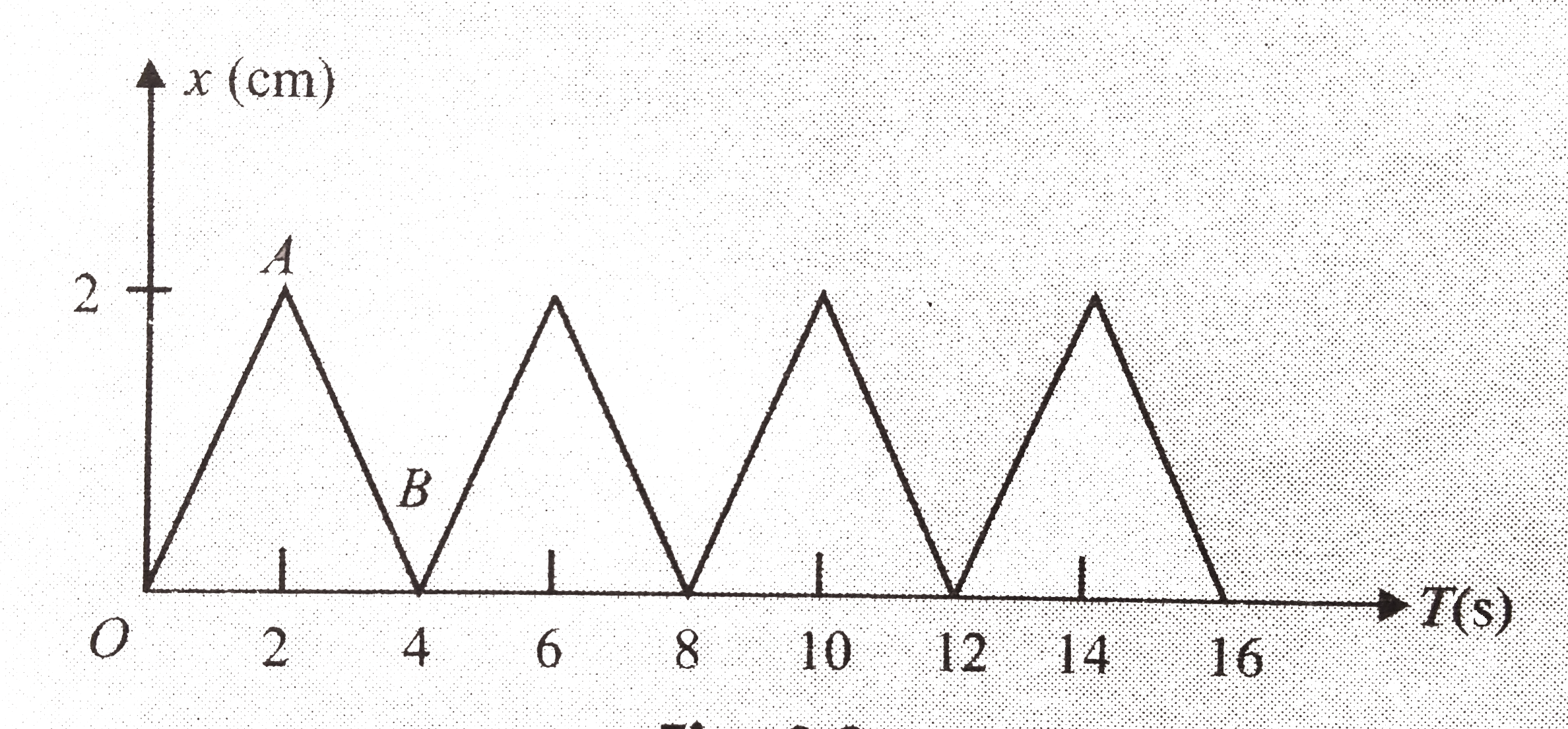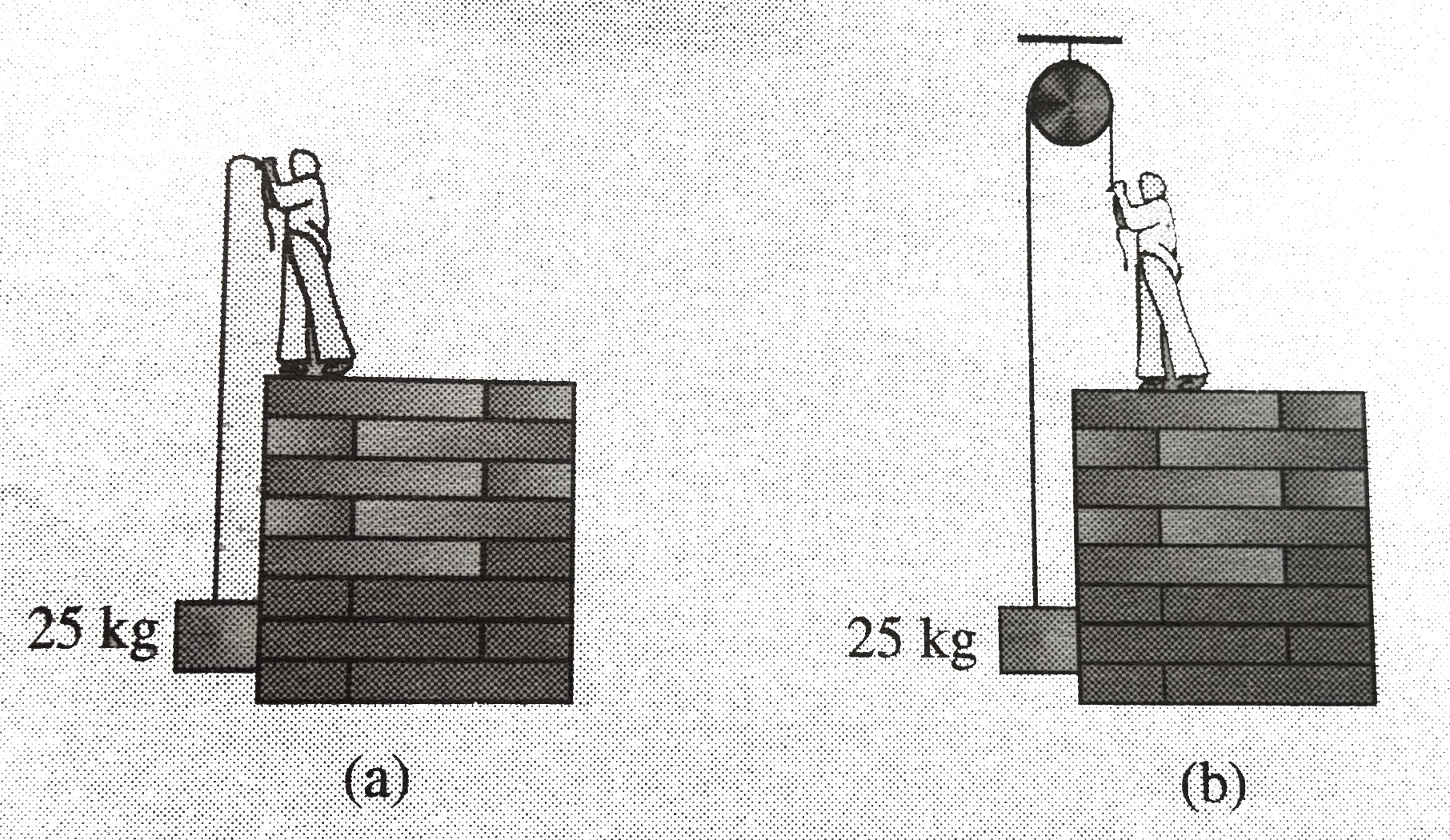EXERCISE from NCERT PHYSICS(ENGLISH) LAWS OF MOTION for Class 11
| Class 11 | PHYSICS |
| Chapter | LAWS OF MOTION |
| NCERT PHYSICS(ENGLISH) | EXERCISE |
| Medium | English |
| Academic Year | 2023-2024 |
Question 1
Give the magnitude and direction of the net force acting on
(a) a drop of rain falling down with a constant speed
(b) a cork of mass 10 g floating on water
(c) a kite skillfully held stationary in the sky
(d) a car moving with a constant velocity of 30kh/h on a rough road
(e) a high speed electron in space free from all gravitational objects and free of electric and magnetic fields.View SolutionQuestion 2
A pebble of mass 0.05 kg is thrown vertically upwards Give the magnitude and direction of net force on the pebble (a) during its upward motion (b) during its downward motion (c) at the highest point where it is momentarily rest
Do your answers change if the pebble were thrown at an angle of say 45∘ horizontal direction.
Ignore air resistance. View SolutionQuestion 3
Give the magnitude and direction of the force acting on a stone of mass 0.1 kg (a) just after it is dropped from the window of a stationary train
(b) just after it is dropped from the window of a train running at a constant velocity of 36km/hr
(c) just after it is dropped from the window of a train accelerating with 1ms−2
(d) lying on the floor of a train which is accelerating with 1ms−2 the stone being at rest relative to the train .
Neglect the resistance of air throughout . View SolutionQuestion 4
One end of string of length l is connected to a particle on mass m and the other end is connected to a small peg on a smooth horizontal table. If the particle moves in circle with speed v the net force on the particle (directed toward centre) will be (T reprents the tension in the string): View SolutionQuestion 8
The driver of a three wheeler moving with a speed of 36km/h sees a child standing in the middle of the road and brings his vehicle to rest in 4 s just in time to save the child What is the average retarding force on the vehicle ? The mass of three wheeler is 400 kg and mass of the driver is 65 kg. View SolutionQuestion 10
A body of mass 0.40 kg moving initially with a constant speed of 10m/s to the north is subjected to a constant force of 8.0 N directed towards the south for 30 s Take the instant the force is applied to be t = 0, and the position of the particle at that time to be x = 0, predict its position at t=−5s,25s,100s ? View SolutionQuestion 12
A bob of mass 0.1 kg hung from the ceiling of a room by a string 2 m long is set into oscillation The speed of the bob at its mean position 1m/s What is the trajectory of the bob if the string is cut when the bob is (a) at one of its extreme position (b) at is mean position ? View SolutionQuestion 13
A man of mass 70 kg stands on a weighing machine in a lift, which is moving (a) upwards with a uniform speed of 10ms−1
(b) downwards with a uniform acceleration of 5ms−2
(c) upwards with a uniform acceleration of 5ms−2 What would be the readings on the scale in each case ?
(d) What would be the reading if the lift mechanism failed and it hurtled down freely under gravity ?View SolutionQuestion 21
A stone of of mass 0.25 kg tied to the end of a string is whirled round in a circle of radius 1.5 m with a speed of 40rev/min in a horizontal plane What is the tension in the string ? What is the maximum speed with which the stone can be whirled around If the string can withstand a maximum tension of 200 N ?View SolutionQuestion 22
If in Q . 21 the speed of the stone is increased beyond the maximum permissible value and the string breaks suddenly which of the following correctly describes the trajectory of the stone after the string breaks :
(a) the stone jerks radially outwards
(b) the stone flies off tangentially from the instant the string breaks
(c) the stone flies off at an angle with the tangent whose magnitude depends on the speed of the stone ?View SolutionQuestion 25
Figure shown a man standing stationary with respect to a horizontal converyor belt that is accelerationg with 1m/s−2 . What is the net force on the man?If the coefficient of ststic friction between the man's shoes and the belt is 0.2 upto what maximum acceleration of the belt can the man continue to be stationary relative to the belt? Mass of the man=65kg(g=9.8m/s2)
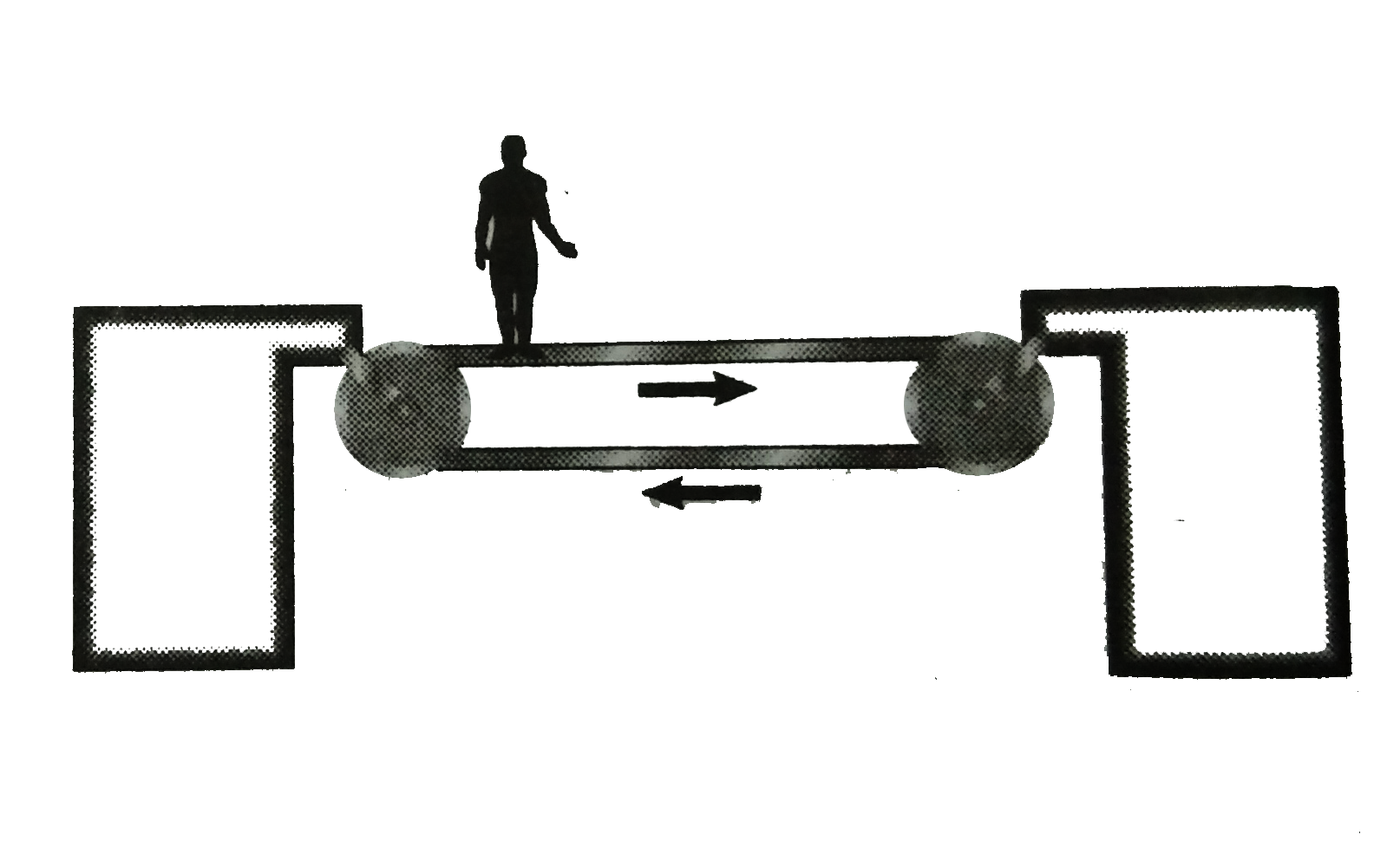 View Solution
View SolutionQuestion 26
A stone of mass m tied to the end of a string revolves in a vertical circle of radius R. The net forces at the lowest and highest points of the circle directed vertically downwards are: [Choose the correct alternative]
T1 and V1 denote the tension and speed at the lowest point T2 and V2 denote the corresponding values at the highest points.View SolutionQuestion 27
A helicopter of mass 1000 kg rises with a vertical acceleration of 15ms−2. The crew and the passengers weigh 300 kg. Give the magnitude and direction of the
(a) force on the floor by the crew and passengers,
(b) action of the rotor of the helicopter on the surroundings air,
(c) force on the helicopter due to the surroundings air.View SolutionQuestion 29
Ten one-rupee coins are put on top of each other on a table. Each coin has a mass m . Give the magnitude and direction of
(a) the force on the 7th coin (counted from the bottom due to all the coins on its top.
(b) the force on the 7th coin by the eight coin.
(c) the reaction of the 6th coin one the 7th coin. View SolutionQuestion 33
A monkey of mass 40 kg climbs on a rope which can withstand a maximum tension of 600 N In which of the following cases will the rope break : The monkey
(a) climbs up with an acceleration of 6ms−2
(b) climbs down with an acceleration of 4ms−2
(c) climbs up with a uniform speed of 5ms−1
(d) falls down the rope nearly freely under gravity ? (Ignore the mass of the rope.) View SolutionQuestion 34
Two bodies A and B of mass 5 kg and 10 kg contact with each other rest on a table against a rigid The coefficient of friction between the bodies and the table is 0.15 A force of 200 N is applied horizontal on A What are (a) the reaction of thee wall (b) the the action , reaction forces between A & B ? What happens when the wall is removed ? Does the answer to (b) Change, when the bodies are in motion ? Ignore difference between μs and μk
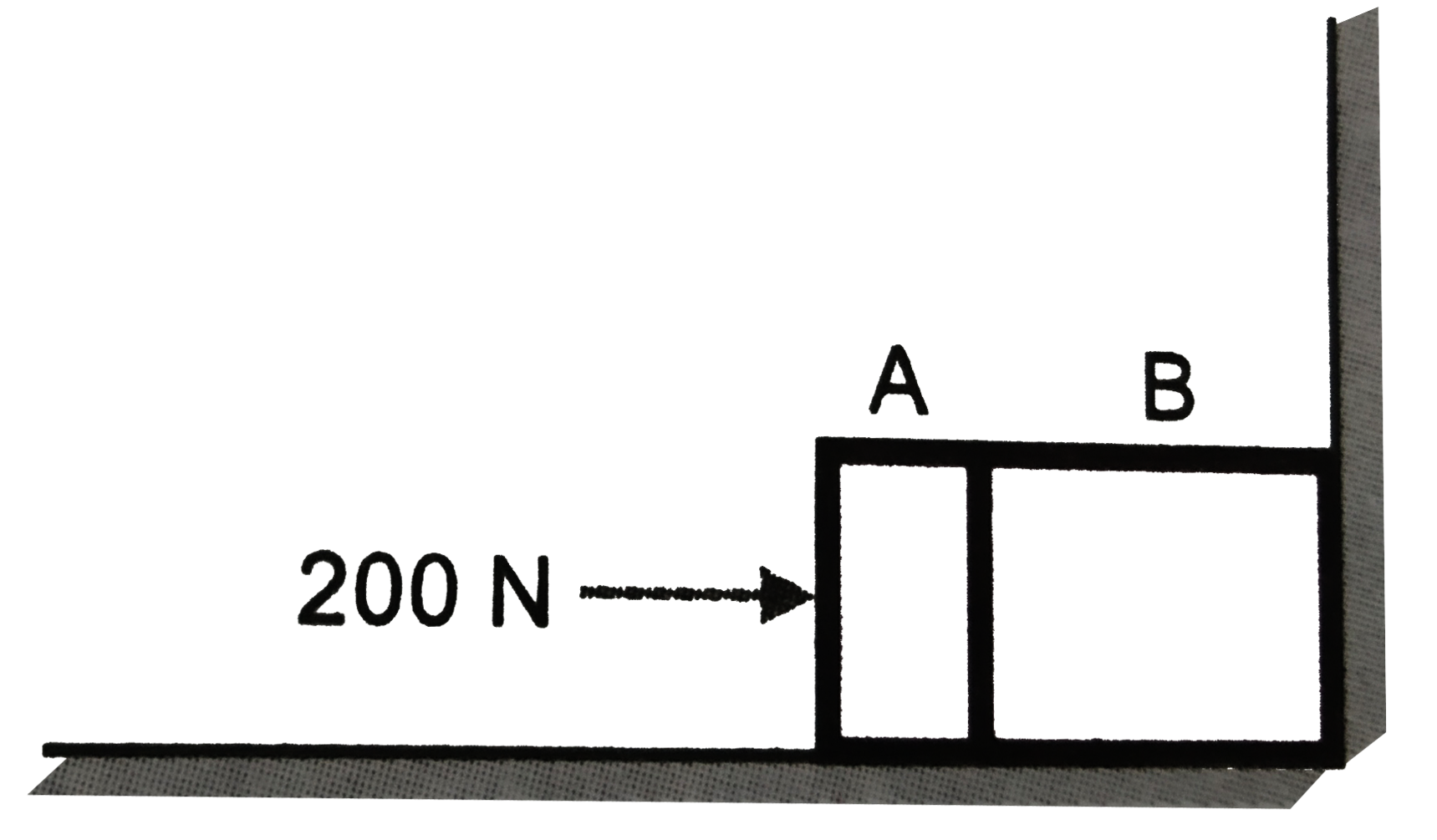 . View Solution
. View SolutionQuestion 35
A block of mass 15 kg is placed on a long trolley . The coefficient of friction between the block and trolley is 0.18 The trolley accelerates from rest at 0.5m/s2 for 20 seconds and then moves with a uniform velocity Discuss the motion of the block as viewed by (i) a stationary observer on the ground, (ii) an observer moving with the trolley. View SolutionQuestion 36
The rear side of a truck is open and a box of 40 kg mass is placed 5 m from the openend as shown The coefficient of friction between the box and the surface below it is 0.15 On a straight road the truck starts from rest and accelerates with 2ms−2 At what distance from the starting point does the box fall off the truck ? (Ignore the size of the box )
 . View Solution
. View SolutionQuestion 37
A long plying record revolves with a speed of 3313rev min−1, and has a radius of 15 cm. Two coins are placed at 4 cm and 14 cm away from the centre of the record. If the coefficient of friction between the coins and the record is 0.15, which of the two coins will revolve with the record ? Take g=9.8ms−2.View SolutionQuestion 38
You may have seen in a circus a motorcyclist driving in vertical loops inside a death well (a hollow spherical chamber with holes, so the spectators can watch from outside). Explain clearly why the motorcyclist does not drop down when he is at the uppermost point of death well with no support from below. What is the minimum speed required at the uppermost position to perform a vertical loop if the radius of the chamber is 25 m ?View SolutionQuestion 39
A 70kg man stands in contact against the inner wall of a hollow cylindrical drum of radius 3m rotating about its vertical axis. The coefficient of friction between the wall and his clothing is 0.15. What is the minimum rotational speed of the cylinder to enable the man to remain stuck to the wall (without falling) when the floor is suddenly removed? View SolutionQuestion 40
A thin circular wire of radius R rotates about its vertical diameter with an angular frequency ω. Show that a small bead on the wire remain at its lowermost point for ω≤√g/R . What is angle made by the radius vector joining the center to the bead with the vertical downward direction for ω=√2g/R ? Neglect friction. View Solution

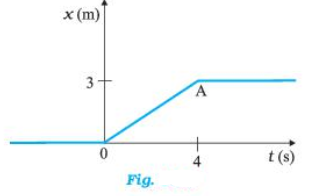
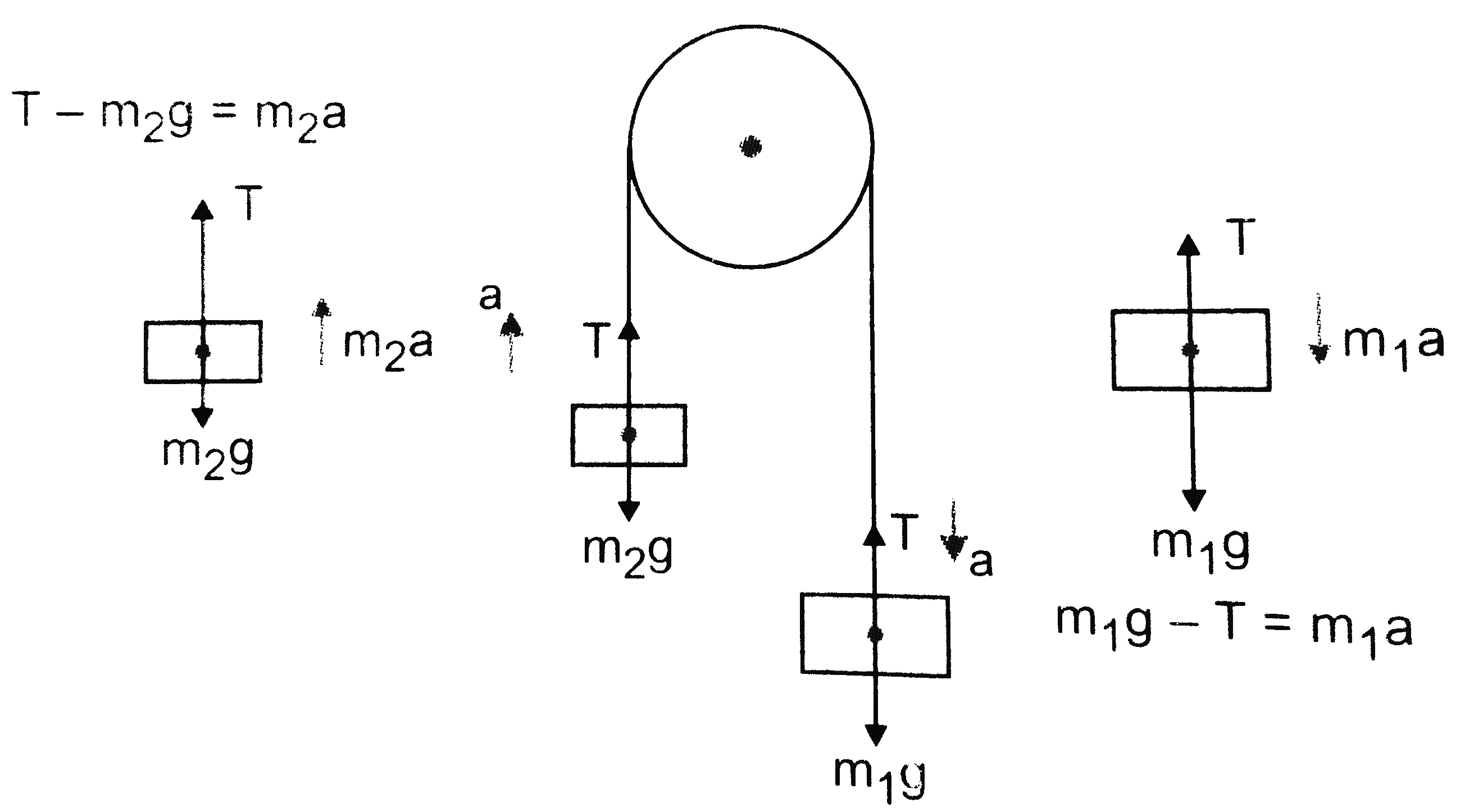 .
. 